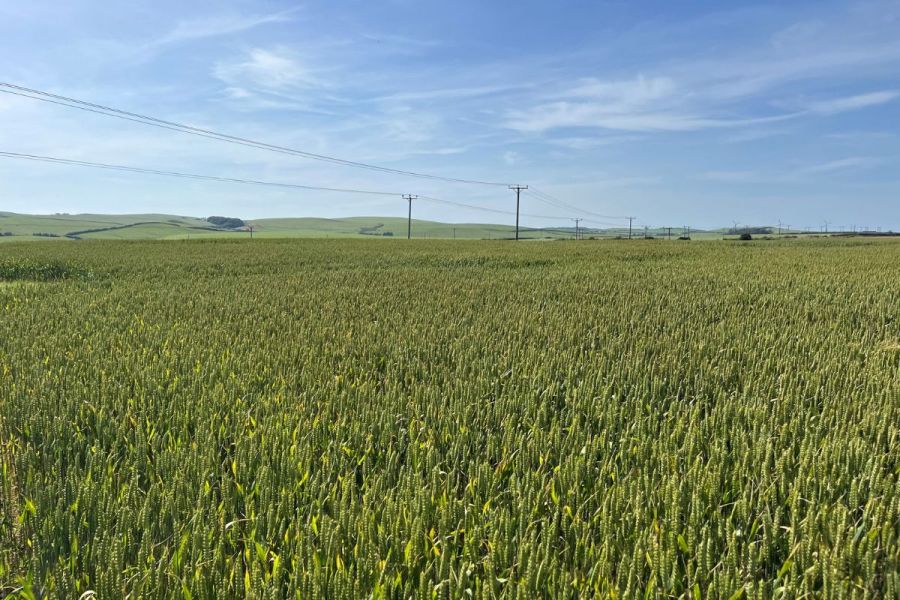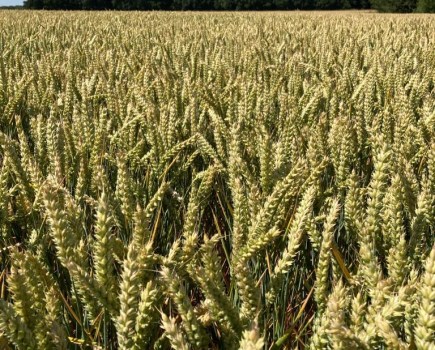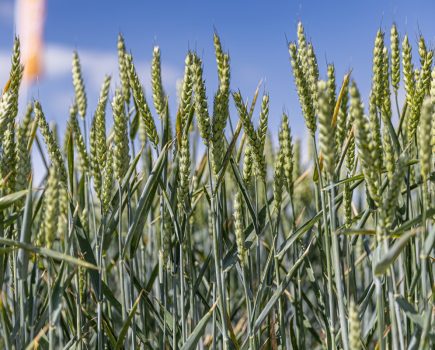Despite being a highly bold and risky move, drilling Blackstone in late April 2024 delivered the goods for Stranraer-based grower, Jamie Kyle
With autumn conditions proving relentless for two years on the bounce, Scottish grower Jamie Kyle had little choice but to find an alternative route forward to enable the farm to continue growing winter wheat.
This led Jamie, who runs family business Robstone Farming Company together with his parents and brother Iain, to seek out a winter wheat variety which could be spring-sown. However, what followed may prove astounding, even to the most risk-inclined individuals.
That’s because in researching a suitable variety, Jamie was advised by agronomist Cameron Ferguson to consider Group 4 soft wheat Blackstone, based on its vernalisation data indicating its potential when drilled in March. But thanks to continued inclement weather, this was pushed to the absolute limit. “
The original intention was to drill Blackstone in March, however, after ordering the seed we had another weather set back and the ground wasn’t suitable for drilling until late April – more than a month later than we’d intended.
“We’d already paid for the order and spring seed wasn’t available. So with few other options and despite both the breeder’s and AHDB’s official advice, we took a calculated gamble and drilled 10ha of Blackstone at a high seed rate of 400 seeds/m2 on April 28 following a late harvested potato crop,” explains Jamie.
Although the quality of the seedbed was poor to moderate, plus a pre-em herbicide couldn’t be applied, he says the crop showed competitive early vigour and raced through its early growth stages.
“For nutrition, two main splits of nitrogen were applied totalling 160kgN/ ha, and on Cameron’s advice, we went with just a two-spray fungicide programme. Spring is a relatively short season in West Scotland, so any septoria present was coming into a growing crop not waiting to explode since the winter, meaning I believe it was the right call.”
He says T1 was applied on 17 June comprising 1.0 l/ha of bixafen+ prothioconazole+ spiroxamine, plus 1.0 l/ha of folpet. It was applied two weeks after Blackstone had received its second split of nitrogen, and having tillered well, was looking exceptionally green and lush by mid-June, adds Jamie.
“For an extra boost we went with 3.0 l/ha of Seamac Gold foliar biostimulant. Then T2 was applied on 18 July using the same chemistry as the T1, but increasing the rates of bixafen+ prothioconazole+ spiroxamine to 1.2 l/ha.”
Jamie highlights that Blackstone stood well throughout the summer with no signs of lodging, although it always appeared slightly forward. “And despite some high septoria pressure, it looked almost as clean as our other winter wheat Extase.
“The one slight disappointment was that we didn’t get the grain swell in the spring crops due to a lack of sunlight that summer, which probably hurt the final bushel weight.”
Harvest took place on 3 October with Blackstone achieving a final overall yield of 7.4t/ha at 15% moisture.
“The final bushel weight was also better than we’d anticipated at 74.2kg/hl with a very respectable straw yield of 3.7t/ha. Based on these results I’ve increased my area of Blackstone to 16ha for Harvest 2025 with a firm eye on the distilling market, due to having William Grant’s distillery on our doorstep.
“In the context of the risk we took I was delighted with the overall performance. Blackstone showed excellent early vigour, stood really well, didn’t require a PGR and produced a lot of very stiff straw,” comments Jamie.
With the ongoing weather challenges in Scotland he believes there’s a place in rotations for varieties with Blackstone’s drilling flexibility. “Given its performance last year, I’d definitely put it ahead of a spring wheat despite its winter wheat classification,” he says.
After hearing the news of Blackstone’s remarkable late-sown performance on Jamie’s farm, Elsoms’ Toby Reich, adds a word of caution. “While it’s always great to hear about successful outcomes from our varieties, if you’re considering drilling any Elsoms variety after its latest safe-sowing date, please check with our team of experts first, as we may have more information about the risks.
“AHDB’s official latest safe sowing date for Blackstone is the end of February, however, without speculating on yield-potential impacts, varieties such as Blackstone do show good levels of vernalisation, even in plots sown into late March,” concludes Toby.
This article was taken from the latest issue of CPM. For more articles like this, subscribe here.
Sign up for Crop Production Magazine’s FREE e-newsletter here.




